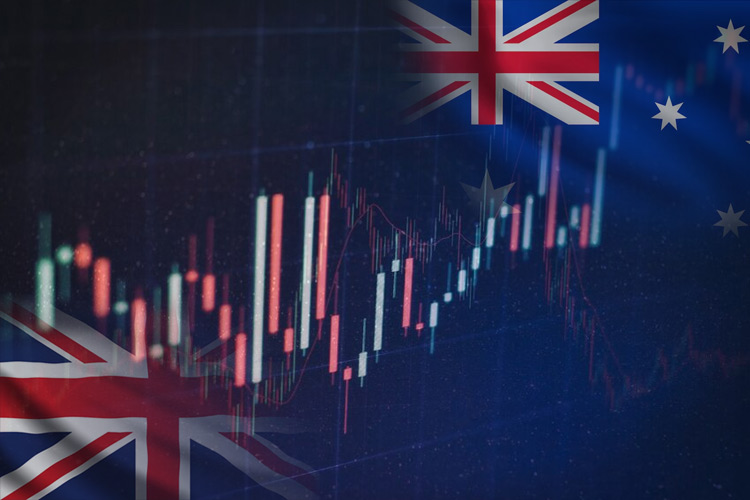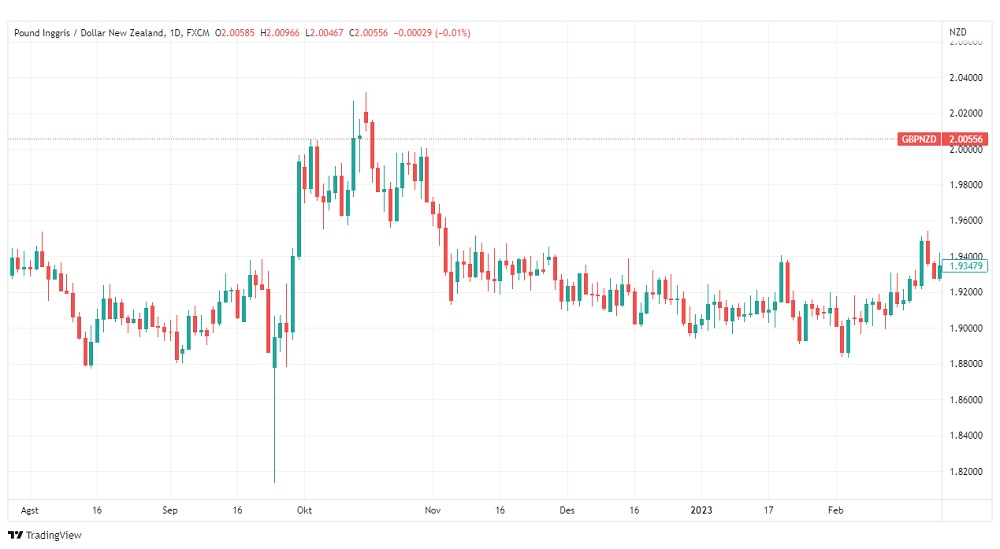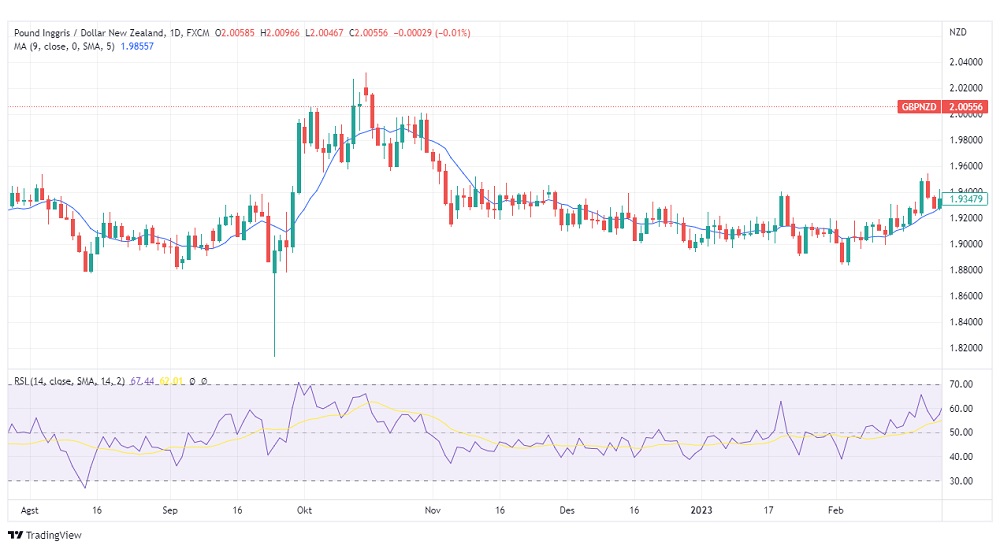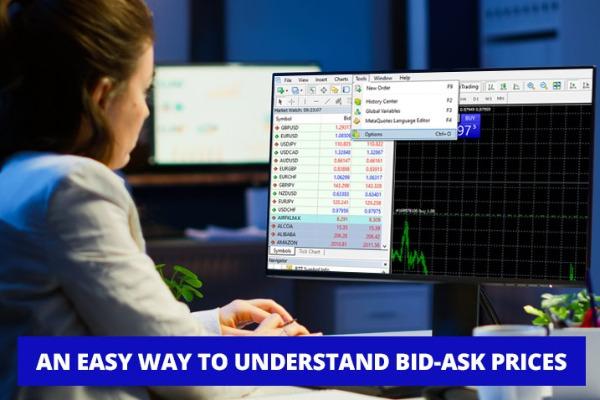The trading opportunities for the GBP/NZD pair have increased since the CPTPP agreement was established between the UK and New Zealand. Let's take a closer look at this pair.

The GBP/NZD trading pair has garnered significant interest from many traders in the forex market. This is because, in February 2022, the UK and New Zealand signed a comprehensive trade agreement to eliminate all barriers related to British goods and services trade.
As a result, the value of trade between the two countries has continued to increase. In 2020 alone, UK-New Zealand trade reached over £2.3 billion. Now, it is expected to grow by 60 percent.
The UK-New Zealand agreement also provides access to the Comprehensive and Progressive Agreement for Trans-Pacific Partnership. With a GDP of £8.4 trillion between the two countries, the GBP/NZD exchange rate has become very attractive for trading.
Understanding the GBP/NZD Exchange Rate
GBP/NZD is the currency pair symbol for the British Pound (GBP) against the New Zealand Dollar (NZD). The first currency mentioned, GBP, serves as the base currency, which is used as the basis for calculating the value of the other currency, in this case, NZD.
For example, if the current exchange rate for GBP/NZD is at 1.9200, then 1 British Pound is equal to 1.9200 New Zealand Dollars. This rate is subject to constant fluctuations, whether up or down, as long as the forex market continues to move.
GBP/NZD Trading Analysis
Before deciding to trade the GBP/NZD currency pair, it is important to conduct an analysis first. There are two types of analysis techniques traders use: fundamental and technical. Let's discuss each one.
Fundamental Analysis of GBP/NZD
Fundamental analysis analyzes the price movement of a forex pair by involving market news and economic data. For example, by looking at interest rate data, CPI data, etc. In the context of trading GBP/NZD, the fundamental aspects that need to be considered are:
- The Economies of the UK and New Zealand
The strength or weakness of the economy has a significant impact on the direction of currency prices. Although the UK economy is much larger than New Zealand's, it does not necessarily mean that the value of GBP/NZD will always increase. NZD could be stronger than the Pound and push down the price of the GBP/NZD pair if there are indicators of economic promise for New Zealand compared to the UK. - BoE and RBNZ
BoE (Bank of England) is the central bank of England, while RBNZ (Reserve Bank of New Zealand) is the central bank of New Zealand. As central banks, BoE and RBNZ have the power to set monetary policies in England and New Zealand. Such policies usually affect the prospect of currency circulation in the market, so central bank steps significantly impact the GBP/NZD exchange rate. - Government Actions and Global Sentiment
Government policies can also significantly impact the direction of GBP/NZD prices. For example, the 2016 Brexit referendum and the cost-of-living crisis in early 2022 caused a weakening of the GBP. Meanwhile, the New Zealand economy is heavily influenced by tourism and dairy production, as the country is the world's largest exporter of dairy products. Therefore, when lockdowns occurred due to the pandemic some time ago, the New Zealand Dollar experienced a significant decline.
Technical Analysis of GBP/NZD
Technical analysis is a method that utilizes various technical tools and indicators on a trading platform to look at historical market data. In practice, traders use technical analysis to determine the buy and sell points of the GBP/NZD pair.
In technical analysis, all information related to market dynamics forms a certain pattern. This makes many traders pay attention to trading charts to recognize price patterns, trends, and signals when deciding whether to buy or sell GBP/NZD.
Types of trading charts include line, bar, and candlestick. Generally, forex traders prefer to observe candlestick patterns because they have a more visually appealing format. In candlestick, you can see the OHLC (Open, High, Low, Close) prices in a candle-like shape with upper and lower wicks.
Many candlestick patterns exist, such as Morning Star, Doji, Hammer, Shooting Star, Evening Star, and many more. However, you don't need to memorize all of them if you already understand how to read candlesticks. Here are some of the candlestick patterns that you will often encounter when trading the GBP/NZD pair:

You can also use technical indicators on the trading platform to perform technical analysis on the GBP/NZD pair. For example, Moving Average (MA), MACD, Relative Strength Index (RSI), Stochastics, and many others. These indicators can be combined according to your trading strategy. Here is an example of applying MA and RSI indicators to trading the GBP/NZD pair:

Technical analysis can help you take a mathematical approach to the overall market behavior towards trading GBP/NZD. However, it would be better to use technical and fundamental analysis to get a more comprehensive assessment in practice.
Market Sentiment of GBP/NZD
Market sentiment refers to the indirect agreement among market participants that can move the price of a currency pair in a certain direction. This agreement results from the accumulation of buy and sells orders in the forex market.
For example, if the GBP/NZD pair shows a buy accumulation of 62 percent while the sell position is 38 percent, then the market sentiment towards the GBP/NZD pair tends to be bullish (expecting the Pound to strengthen).
Forex market sentiment is divided into bullish, bearish, and sideways categories. Bullish indicates a market sentiment that tends to rise, bearish tends to fall, and neutral tends to be flat or stable. If the market sentiment is neutral or sideways, market participants are still unsure whether to buy or sell.
It should be noted that market sentiment can be used as a reference to understand market conditions, but it cannot be used to predict future changes.
Trading Pair GBP/NZD Correlation
You can trade the GBP/NZD pair with other pairs in the market. This technique is called pair correlation. Generally, highly correlated forex pairs are those with close economic ties. The essence of pair correlation is to open positions based on the pair's relationship.
For example, the GBP/NZD pair shows a strong correlation of +81 with EUR/NZD and +90 with GBP/AUD. This means you can trade the GBP/NZD, GBP/AUD, and EUR/NZD pairs in the same direction.
A positive correlation is known as a positive correlation. If two forex pairs positively correlate, they will show almost simultaneous up-down movement dynamics.
One way to trade the GBP/NZD pair with a positive correlation with EUR/NZD is to open a buy position on both pairs. If the price conditions meet the correlation principle and both pairs strengthen, you can profit twice from both positions. The same can also be applied to a sell position if you are confident that the price will weaken.
In addition to positive pair correlation, you can also try to see opportunities for the negative correlation. An example of a pair negatively correlated with GBP/NZD is EUR/GBP.
Based on the explanation above, you now understand how to trade the GBP/NZD pair better. As one of the cross pairs or minor pairs, GBP/NZD offers strong liquidity. However, it would be best if you predicted its volatility to make decent profits. You can also trade the GBP/NZD pair with a style that suits your personality and preferences.
Besides GBP/NZD, GBP/USD is another popular pair containing the British currency. However, some things must be understood before starting to trade this pair. What are those?

 Dedicated FREE FOREX VPS
Dedicated FREE FOREX VPS Free FOREX Virtual Private Server
Free FOREX Virtual Private Server MT4 Demo Contest, Get $500
MT4 Demo Contest, Get $500 Sign Up for an Account, Claim 60% Deposit Bonus
Sign Up for an Account, Claim 60% Deposit Bonus Free MT4/MT5 VPS 2024
Free MT4/MT5 VPS 2024 Send E-mail and Get Free Merchandise
Send E-mail and Get Free Merchandise $1K Refer a Friend Bonus for Pepperstone Pro clients
$1K Refer a Friend Bonus for Pepperstone Pro clients Maximize Your Earnings with 100% Deposit bonus
Maximize Your Earnings with 100% Deposit bonus Trade to Win, $5,000 Monthly Demo Contest
Trade to Win, $5,000 Monthly Demo Contest Claim 30% + 15% Deposit Bonus from LiteFinance
Claim 30% + 15% Deposit Bonus from LiteFinance











